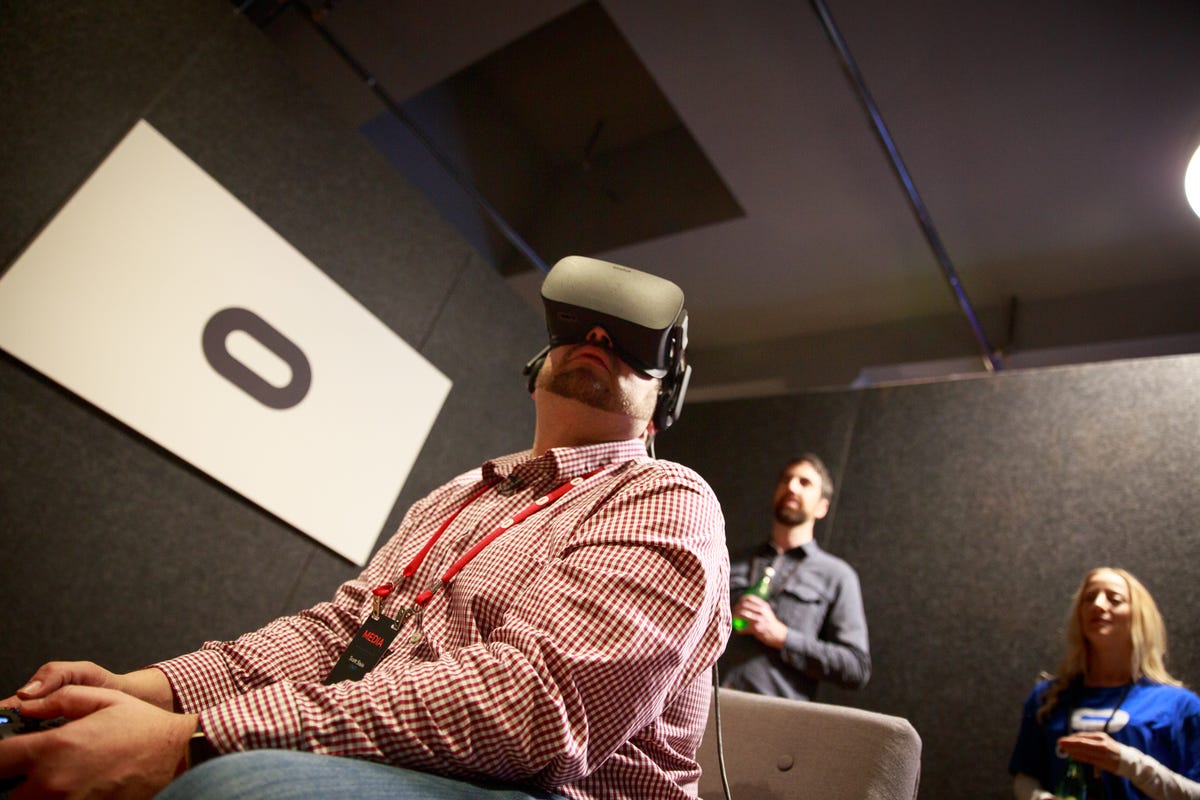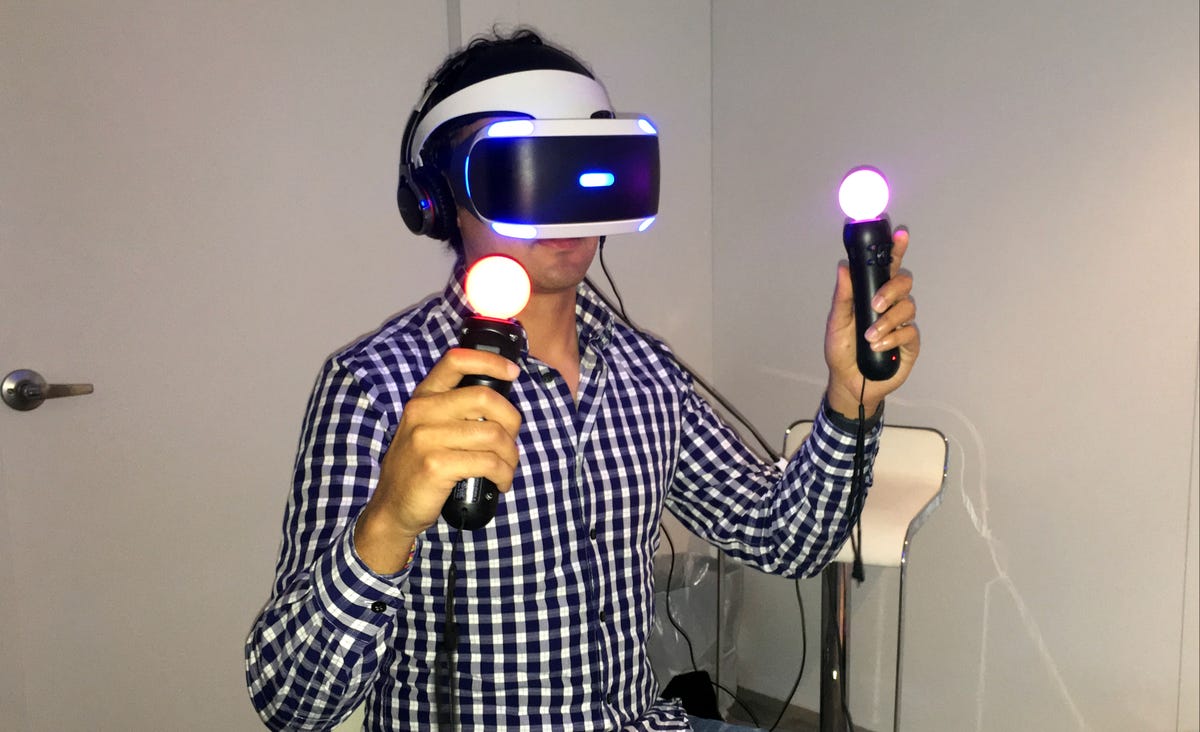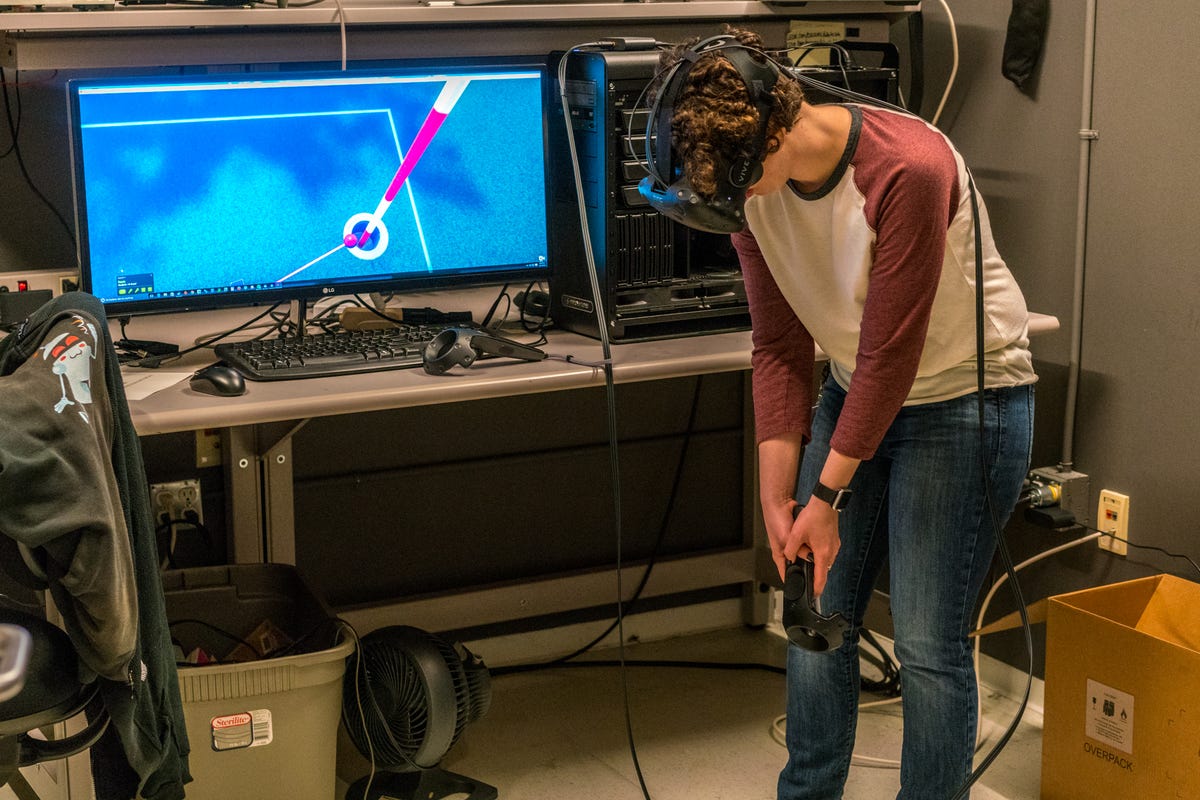You set up a room with an advanced VR kit, and wire it to your PC. It all seems fine. Anything to be worried about?
Actually, I worry a lot.
Virtual reality is amazing, but it isn’t safe. It isn’t easy. And with the complicated hardware being released now, it could end up being a nightmare in the wrong hands.
Yes, it sounds like I’m panicking. But I’ve noticed a lot of things that already concern me. In prepared demo rooms, where extensive steps are taken to be safe — and there’s almost always a staffer standing right behind me making sure I don’t slip or trip — they still happen.
Virtual reality isn’t necessarily a cobra ready to strike your loved one. But as Oculus Rift and many more headsets make their way out to the public, there could be some big problems. After hours in and out of mobile VR, Oculus Rift, HTC Vive and PlayStation VR, these are the things that worry me most.


Josh Miller/CNET
It can make you sick
VR-induced nausea is a very real thing. I used to feel dizzy and sick every time I tried early VR hardware, and those moments have diminished greatly. But they still happen, even to me…and I consider myself a seasoned VR veteran.
It’s hard to predict when it’ll happen. For different people, it happens with different games and experiences. I find slow-moving games where I have to use a physical controller (like an Xbox One controller) to move around, in addition to turning my head, are the ones that make me want to throw up. Oculus has a few like this: Adr1ft, Dreadhalls, and The Vanishing of Ethan Carter. I wasn’t bothered by faster-moving racing games, but I know others that were.
Virtual reality safety manuals recommend taking breaks frequently. You can also adjust the fit of the headset, which isn’t always easy — tightening or loosening straps, plus fixing focal distance or even eye distance — takes a lot of time to fiddle with.
Some game developers have slowly tweaked the design of some games to be less nausea-inducing — for instance, having a cockpit around you seems to help. Maybe that’s why I got nauseous in games where I was wandering freely in first-person, helmetless.
VR can have neurological effects because of its eerily realistic simulated motion. “Simulator sickness” is a condition suffered in flight simulations, and “virtual reality sickness,” a close cousin, has been around since the early days of VR. While lag times and app design have reduced it tremendously, it still exists at times, and I don’t know anyone who hasn’t had at least a few issues with fatigue, nausea or wooziness over time. Maybe it’s something to get used to. Maybe the hardware still needs to improve. Maybe human beings will always need to take breaks when using VR.


Vanessa Hand/CNET
You can’t see anything around you, including your TV or your family
Motion-sensing VR systems like the Oculus Rift, HTC Vive and PlayStation VR involve standing, ducking, swinging your arms, and even briefly walking — all with a headset on your head that blocks vision and sound.
HTC Vive has a passthrough camera that can see around you, and its sensors can tell you when you’re approaching a wall, but the camera features aren’t always on. I’ve seen several people at CNET nearly smash their Vive motion controllers into a TV with camera sensing turned off, not even realizing it was there. And to others, it’s already happened. It would be an awful real-world injury. Or what about a wall where you didn’t draw the boundary properly, and suddenly punched your hand into very real bricks?
Who knows if you also might swing a controller unknowingly into someone else’s face? I’ve seen people get hit by standing in someone’s “VR zone.” I hit myself in the face (luckily, the helmet protected me) with a motion controller, forgetting my own body’s relation to itself.
What about small pets or children? What about families playing together? You shouldn’t keep VR anywhere near them. Oculus warns to keep the Rift “out of reach from children and pets,” and to “move objects or people out of your Rift space.” I wouldn’t trust my ability to play VR games in a crowded room unless I was sitting down. Am I recommending your own private VR room? Yeah, I am, if you’re planning on moving around and you have any kids. Seriously, I can’t even keep an eye on where the coffee table is. There’s no way any toddler should be within 20 yards of someone who’s illuded by VR.
I’m a dad of two kids, ages seven and three. I don’t trust myself to not trip over something.


Nate Ralph/CNET
Tripping over wires
The latest round of advanced VR systems have another new drawback: cables. The Vive, Oculus Rift and PlayStation VR coming later this year all are tethered by thick bunches of wires leading back to your PC or game system. The Vive and Rift have long extension cords, and these cables are plugged into a special breakout box where the cords can break away in case they’re pulled too hard.
But, after using these systems in self-contained demos and in-work settings, I’ve gotten tangled. Full-room VR like the Vive means walking around with a long cable trailing behind me and across the floor, unseen by me. The cable sometimes snakes around my legs or under my feet.
I once had an Oculus Rift demo where I was sitting down, and the attendant caught the wire running to my head, yanking my helmet sharply to the side. Sean Hollister suffered worse during a Star Wars demo on Vive, and ended up literally falling on his ass.
The moment lots of wires run between you and something across the room, and you can’t see anything, complications are bound to occur.


This is called “VR face.”
Josh Miller
Having a screen inches from your eyes all the time
My local optometrist, when I explained VR to her as I was getting an eye exam, instinctively said “that’s not good.” Healthcare professionals don’t tend to like the idea of suspending a display an inch or so from your face for hours and hours. I haven’t seen many studies of what VR might do as far as causing eye fatigue, but my eyes need a break at least every half an hour. And, again, I consider myself VR-acclimated.
Home tips (or, Why I’m worried)
Best advice? Take a little time to read the included safety manuals if it’s your first time using VR. Set up your home playing space safely, and keep it away from big common areas or little kids or pets. And I’d still recommend playing alone. And seated — or at least standing still. Maybe with someone watching you the first few times, just in case.
I have no idea what will happen once more people use VR, but dumb accidents routinely happen over far less. I don’t want people vomiting, having seizures, stepping on their pets, maiming their children, or smashing their hands through plate glass. Cover up your eyes and ears and start wandering around, and all bets are off in the real world. If you’re an early adopter, take the full-motion VR hardware seriously.



